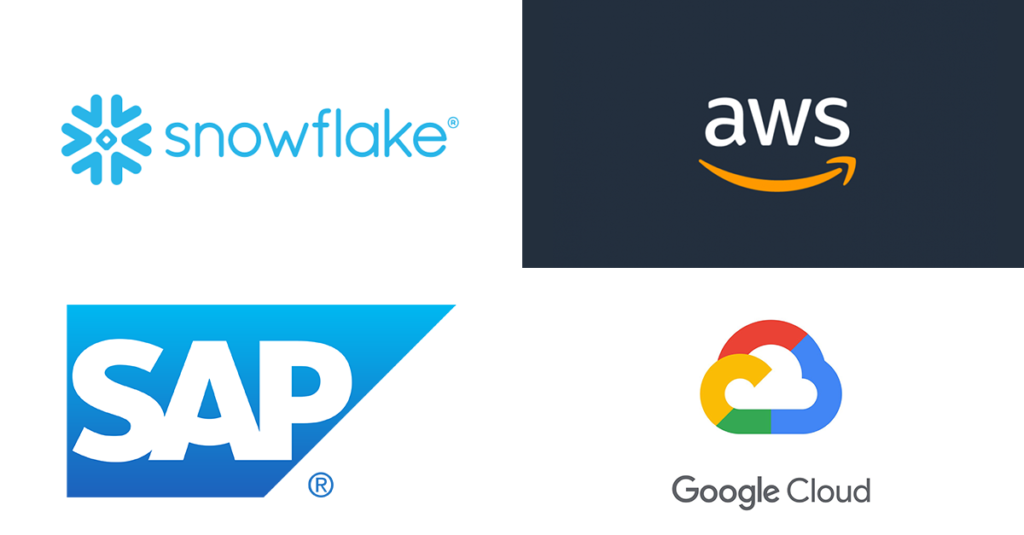The database market is in the throes of its biggest change of the last 50 years.
Cloud databases will soon overtake traditional on-premises databases—the ones long used for transactions and analytics in corporate data centers—as the preferred data-management platforms for many use cases.
The transition is happening so fast that Gartner, in a strategic planning assumption for cloud databases, posited that a whopping 75 percent of all databases will be deployed or migrated to a cloud platform by 2022.
Adoption of cloud-based data platforms has accelerated as organizations of all sizes build and deploy new applications as part of ongoing digital transformation strategies spurred by the Covid-19 pandemic. AWS CEO Andy Jassy said in December that Amazon Aurora, a relational database in the cloud, is the fastest growing service in the history of AWS.
Cloud databases are rising in popularity because they have many advantages over on-premises databases. Cloud databases are easier to build and deploy, more secure, and can be distributed geographically for policy compliance and redundancy. And some are automated and fully managed by cloud database providers, freeing IT teams to focus on new development rather than database administration.
The database market dates back to 1970 when Ted Codd, a computer scientist at IBM, published a paper on “the relational model,” a way of organizing data in tables of rows and columns. Oracle co-founder Larry Ellison was among the entrepreneurs who seized on the idea in the 1970’s, and to this day relational databases are the industry norm and Oracle among the market leaders.
But Oracle is being challenged by fast-rising cloud database providers. That includes the big three cloud providers—Microsoft, AWS, and Google Cloud—as well as startups and specialists such as Cockroach Labs, Databricks, MariaDB, and Snowflake. The always competitive database market is getting even more rough and tumble as these vendors elbow for position. In the latest round, see “Microsoft Again Puts Bullseye on Oracle; Cloud Database Wars Escalate.”
Oracle and other long-established database providers, including IBM and Teradata, are fighting back with their own cloud database offerings. In January, Oracle released Oracle Database 21c, the latest version of its cloud database with more than 200 new features and improvements.
The new Cloud Database Report, released today on CloudWars.co, identifies 20 cloud database providers that are industry leaders based on four criteria: enterprise capabilities, platform adaptability, innovation, and demonstrated business value. The Cloud Database Top 20 includes AWS, Google Cloud, Microsoft, Oracle, Snowflake, and other cloud database providers, from incumbents to relative newcomers.
Growing sales and pipelines
The skyrocketing numbers reveal a market in transition. While sales of traditional, on-premises databases may grow by a few percentage points—if at all—from year to year, it’s not unusual for cloud database revenues and pipelines to jump 50% or more.
Here are a few proof points:
- Snowflake’s revenue surged 115%, to $148 million, in Q3 FY2021, compared to a year earlier
- Oracle’s Gen2 Cloud Infrastructure and Autonomous Database revenue increased by more than 100% in Q2 of FY2021
- Teradata’s public cloud annual recurring revenue increased 165% reported and 159% in constant currency to $106 million from $40 million in Q4 of 2020
- In January, Cockroach Labs disclosed $160 million in new funding and said its revenue more than doubled last year
Developers drive adoption
Developers and IT professionals are largely responsible for the rapid shift to cloud databases. They are turning to them to deliver new applications faster, and also to keep up with unrelenting data growth by taking advantage of the scalability of cloud services. Serverless databases, such as AWS’s Amazon Aurora Serverless, are an increasingly popular way to scale databases and applications automatically without requiring users to actively manage capacity.
Relational databases continue to be widely used in the cloud, but there are many other types of cloud databases to choose from, including graph, key-value, document, time-series, wide-column, and in-memory. Neo4J, a developer of graph databases, said that more than 90% of its customers opted to run their graph-powered applications in the cloud last year.
The pace of innovation and customer adoption has the attention of investors. Databricks, which develops a cloud data platform for AI, analytics, and data science, disclosed earlier this month that it received $1 billion in its latest round of funding. Investors include AWS, Microsoft, and Salesforce.
There seems to be no turning back on the cloud database trend. Gartner, in its November 2020 Magic Quadrant for Cloud Database Management Systems, says that only 5% of databases deployed to the cloud will ever be considered for “repatriation” to on-premises systems.
A growing number of organizations are moving all of their databases to the cloud, but others will use a mix of cloud and on-premises databases for the foreseeable future. AWS, IBM, and Oracle are among the vendors providing hybrid database solutions to businesses that need a bridging strategy for a unified approach.
The just-released Cloud Database Report provides analysis of the players, platforms, and users of cloud databases. The report is available at no cost to subscribers.
RECOMMENDED READING
Microsoft Again Puts Bullseye on Oracle; Cloud Database Wars Escalate
The Cloud Database Market Is Booming: 10 Key Developments
Google Cloud Seeing “Extraordinary” Demand for Multicloud Anthos, Says CEO Kurian
Oracle Database 21c Takes on AWS, Microsoft in Clash of the Titans—Plus Snowflake
Can Oracle Beat AWS and Snowflake in the Cloud Database Wars?
Inside Snowflake: the Phenomenal Growth Number Driving All the Hype
Oracle’s Larry Ellison Admits Snowflake Is a Killer: “It’s Killing Amazon Redshift”
Disclosure: at the time of this writing, Oracle was among the many clients of Cloud Wars Media LLC and/or Evans Strategic Consulting LLC.
Subscribe to the Cloud Database Report for timely news, insights and expert interviews. It’s free, it’s exclusive and it’s great!






